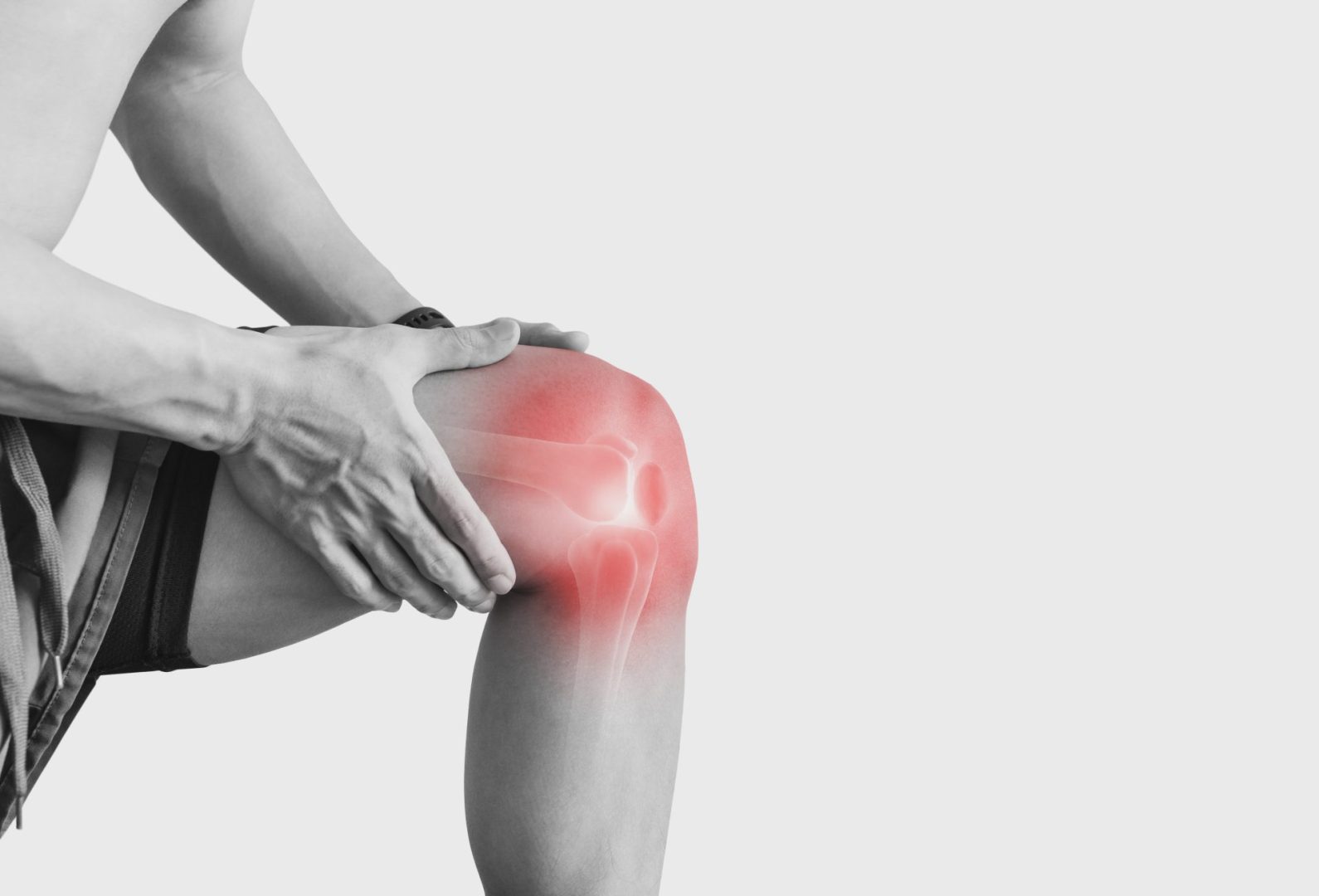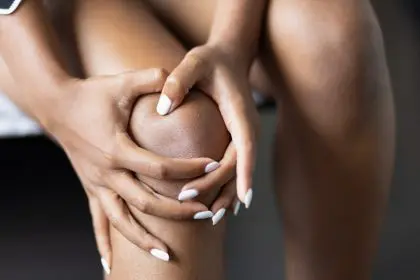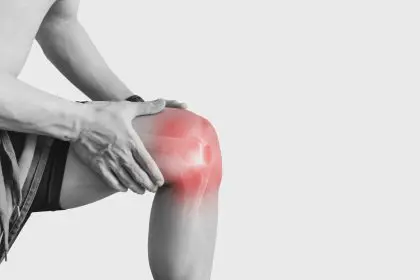That twinge in your knee before rain isn’t just in your head — your joints are responding to atmospheric changes in fascinating ways.
For generations, people have claimed they could “feel” approaching weather changes in their bones and joints. This phenomenon, often dismissed as folklore or coincidence, has fascinating scientific underpinnings that explain why millions of people experience predictable joint pain when weather systems shift. The connection between barometric pressure, temperature fluctuations, and joint discomfort reveals how our bodies function as sophisticated environmental sensors, sometimes detecting atmospheric changes before they become visible on weather radar.
Understanding this relationship helps explain why your grandmother’s weather predictions based on her arthritic knee might be surprisingly accurate, and more importantly, what you can do about these weather-related pain fluctuations. The mechanisms behind weather-sensitive joints offer valuable insights into how our bodies interact with the environment around us, providing both explanation and potential solutions for those whose pain forecasts storms with remarkable reliability.
The barometric pressure connection
At the heart of weather-related joint pain lies barometric pressure — the weight of the atmosphere pressing on the earth’s surface and everything on it, including our bodies. This invisible force remains relatively stable during fair weather but drops noticeably before storms and other significant weather events. This pressure decrease, often occurring 24-48 hours before visible weather changes, creates the perfect conditions for joint discomfort.
When barometric pressure falls, it reduces the external pressure against body tissues, allowing them to expand slightly. For healthy joints, this subtle expansion goes unnoticed. However, for joints affected by injury, arthritis, or inflammation, this expansion creates additional pressure on already sensitive nerve endings. Inflamed or damaged tissues that have limited space to expand within joint capsules become increasingly painful as they swell against these constraints.
This expansion effect proves particularly problematic in joints with existing damage or inflammation. The synovial fluid that cushions and lubricates joints may also be affected by pressure changes, becoming less effective at reducing friction between moving parts of the joint. This altered fluid dynamics further contributes to the sensation of stiffness and discomfort that many experience before storms.
Research tracking patients with chronic joint conditions reveals a consistent pattern of pain increases 24-48 hours before precipitation, with severity often corresponding to the magnitude of pressure changes rather than absolute pressure levels. This timing explains why joint pain often begins before clouds appear in the sky, giving credence to claims about “feeling” approaching weather.
The humidity factor in joint flexibility
Alongside barometric pressure, humidity levels significantly influence joint comfort through several mechanisms. The amount of moisture in the air affects how our bodies regulate internal hydration, which directly impacts the cushioning and lubrication of joints. This relationship explains why some people experience different types of discomfort in humid versus dry conditions.
High humidity environments slow the body’s natural cooling process by reducing the evaporation rate of sweat. This inefficient cooling can increase inflammation throughout the body, particularly in already sensitive areas like damaged joints. The inflammatory response increases blood flow to affected areas, potentially increasing pressure within confined joint spaces and amplifying pain signals.
Conversely, extremely low humidity environments present different challenges. Dry air increases the rate at which the body loses moisture, potentially leading to mild dehydration. Even slight dehydration reduces the production of synovial fluid, the natural lubricant that reduces friction between joint surfaces. With decreased lubrication, the physical movement of joints creates more friction, generating pain signals even during normal activity.
The combination of humidity changes with temperature fluctuations further complicates this relationship. High humidity makes high temperatures feel more oppressive by hampering the body’s cooling systems, while low humidity makes cold temperatures feel more penetrating by accelerating heat loss from the skin. These compounding effects explain why the same temperature might feel comfortable or uncomfortable depending on moisture levels.
The temperature effect on tissue elasticity
Temperature changes directly affect the physical properties of the tissues surrounding joints, particularly the elasticity of muscles, tendons, and ligaments. These supporting structures become more rigid and resistant to stretching in cold environments, creating the perfect conditions for joint discomfort during temperature drops.
Cold exposure causes blood vessels near the skin surface to constrict, reducing blood flow to extremities in an effort to conserve core body heat. This vasoconstriction diminishes the delivery of oxygen and nutrients to joint tissues while simultaneously slowing the removal of inflammatory compounds and waste products. The reduced circulation creates a localized environment where inflammation persists longer and healing processes slow considerably.
The physical properties of synovial fluid also change with temperature fluctuations. This joint-cushioning liquid becomes more viscous (thicker) in cold conditions, similar to how honey flows more slowly when cold. The thicker fluid moves less freely within the joint, reducing its shock-absorbing capacity and lubricating efficiency. This increased viscosity explains the characteristic morning stiffness many experience during cold weather, which often improves after movement warms the joints.
Rapid temperature changes prove particularly problematic as they create uneven expansion and contraction of different joint components. Bones, cartilage, tendons, and ligaments each respond to temperature shifts at different rates, creating temporary misalignments and tension within the joint structure. These mechanical stresses generate pain signals even without visible swelling or inflammation.
The nerve sensitivity phenomenon
Beyond physical tissue changes, weather fluctuations directly influence how nerves transmit pain signals, creating a neurological component to weather-related joint discomfort. This explanation helps clarify why identical weather conditions might affect individuals differently based on their unique nervous system sensitivity.
Cold temperatures heighten nerve sensitivity throughout the body, lowering the threshold at which normal sensations register as painful. This increased sensitivity affects specialized nerve endings called nociceptors, which detect potentially harmful stimuli and transmit pain signals to the brain. When cold-sensitized, these receptors may interpret normal pressure or movement as threatening, generating pain responses to otherwise benign stimuli.
This neurological sensitivity partly explains why joints with previous injuries often react more strongly to weather changes. Past trauma creates permanent changes in local nerve structures, including the development of new pain receptors and altered sensitivity thresholds. These neurological adaptations essentially create weather sensors within damaged tissues that respond to environmental shifts more readily than uninjured areas.
The autonomic nervous system, which controls involuntary bodily functions, also responds to environmental changes by adjusting blood flow, muscle tension, and inflammation levels. These adjustments, designed to protect the body from environmental stressors, can inadvertently increase discomfort in vulnerable joints. This system-wide response explains why multiple joints often react simultaneously to weather changes rather than just a single trouble spot.
The inflammatory response to pressure changes
Inflammation represents the body’s natural healing mechanism, but this process becomes problematic when triggered by weather changes in joints with existing damage or degenerative conditions. The inflammatory cycle initiated by atmospheric pressure shifts creates the perfect storm for heightened pain during weather transitions.
When barometric pressure drops, tissues throughout the body experience decreased external pressure. This pressure reduction allows slight expansion of gases within tissues and increased permeability of blood vessels. For individuals with existing joint inflammation, this expansion essentially removes a constraint that normally limits tissue swelling, allowing inflammatory processes to accelerate temporarily.
The expanded tissues increase pressure on nearby pain receptors, while inflammatory mediators directly activate these same nerve endings. This dual stimulation creates the characteristic aching, throbbing sensation many weather-sensitive individuals describe. The effect proves particularly pronounced in enclosed joint spaces like knees, wrists, and spinal facet joints, where even minor swelling significantly increases pressure.
This weather-triggered inflammation often follows a predictable timeline: increasing as barometric pressure falls before a storm, peaking during precipitation, and gradually subsiding as pressure stabilizes afterward. However, for those with chronic inflammatory conditions, this weather-related flare may persist long after atmospheric conditions stabilize, as the inflammatory cycle, once initiated, continues independently of the original trigger.
The biomechanical changes during weather shifts
Beyond biochemical and neurological effects, weather changes alter the actual mechanics of how joints function, creating subtle but significant changes in movement patterns that contribute to discomfort. These biomechanical adjustments explain why weather-related pain often worsens with activity rather than rest.
Cold temperatures increase the viscosity of synovial fluid while simultaneously reducing muscle elasticity. This combination forces joints to work harder during normal movements, as stiffened muscles must overcome greater internal resistance. The increased workload generates more wear on joint surfaces and requires greater energy expenditure, contributing to both pain and fatigue.
Weather-related discomfort often leads to unconscious movement adaptations as people naturally adjust their gait or posture to minimize pain. These compensatory movements, while temporarily reducing discomfort, create abnormal stress patterns across other joints in the kinetic chain. This redistribution of forces explains why weather-sensitive individuals often report pain that migrates through different joints during prolonged weather events.
Barometric pressure changes also affect proprioception — the body’s awareness of joint position in space. Slight tissue expansion within joint capsules stimulates specialized position-sensing receptors, potentially creating confusion in the body’s positional awareness system. This diminished proprioception increases the risk of awkward movements that strain tissues and trigger pain responses, particularly during complex physical activities.
The psychological impact on pain perception
Weather-related joint discomfort exists within a complex mind-body relationship, where psychological factors significantly influence how physical sensations are interpreted and experienced. This psychological component explains why identical weather conditions might affect individuals differently based on their mental state and pain beliefs.
Anticipation of pain during weather changes can trigger a nocebo effect — essentially the opposite of a placebo — where expecting pain actually increases its likelihood and severity. Weather forecasts predicting storms or cold fronts may prime pain-sensitive individuals to notice and amplify joint sensations they might otherwise ignore. This anticipatory response creates a self-fulfilling prophecy where pain manifests partly because it’s expected.
Mood changes commonly associated with weather shifts further complicate this relationship. Reduced sunlight during stormy or overcast conditions affects serotonin production, potentially lowering mood and decreasing pain tolerance. This reduced tolerance makes normal joint sensations more likely to register as painful, creating a circular relationship between weather, mood, and discomfort.
Sleep disruption during weather changes represents another significant factor, as temperature fluctuations, humidity changes, and barometric shifts all influence sleep quality. Inadequate sleep directly lowers pain thresholds while impairing the body’s natural pain-modulating systems. This sleep-pain connection helps explain why weather-related discomfort often feels worst the morning after significant atmospheric changes.
The genetic factors in weather sensitivity
Emerging research suggests that weather sensitivity may have genetic underpinnings, with certain genetic profiles creating predispositions to weather-related pain. This hereditary component explains why weather sensitivity often runs in families and affects certain population groups more prominently than others.
Specific genetic variants influence how the body processes inflammatory compounds, with some individuals genetically programmed to produce stronger or more persistent inflammatory responses to identical triggers. These genetic differences create variable thresholds for weather-related discomfort, with some people experiencing significant pain during minor atmospheric shifts while others remain comfortable during major weather events.
Temperature sensitivity also shows genetic patterns, with variations in genes controlling thermal receptors creating different response thresholds to cold and heat. These genetic differences explain why some individuals experience joint pain at relatively mild temperatures while others remain comfortable in more extreme conditions.
Collagen formation, crucial for maintaining healthy joint cartilage and connective tissues, is directly influenced by genetic factors. Certain genetic profiles result in collagen structures more vulnerable to pressure changes or temperature fluctuations. These structural variations create permanent predispositions to weather sensitivity that persist regardless of lifestyle modifications or treatments.
The cellular pressure sensing mechanism
At the microscopic level, specialized cells within joint tissues directly sense and respond to pressure changes, functioning essentially as biological barometers. These cellular pressure sensors provide the fundamental mechanism through which atmospheric pressure affects joint comfort.
Mechanoreceptors — specialized cellular structures that detect physical forces — exist throughout joint tissues, monitoring compression, stretching, and pressure. These receptors trigger biochemical responses when pressure conditions change, potentially initiating inflammation, fluid retention, or nerve sensitization. This cellular sensing system explains the remarkable sensitivity some individuals have to even subtle barometric shifts.
Recent research has identified pressure-sensitive ion channels in joint tissues that change their electrical activity in response to mechanical forces. These channels, particularly abundant in previously injured tissues, essentially function as microscopic pressure gauges, altering cellular behavior when atmospheric pressure changes. Their heightened presence in arthritic or damaged joints explains the increased weather sensitivity of these areas.
The cellular responses triggered by pressure changes occur rapidly but resolve slowly, explaining why weather-related pain often persists after atmospheric conditions stabilize. Once activated, these cellular pathways continue generating inflammatory compounds and pain signals for hours or days, creating pain patterns that don’t perfectly match real-time weather conditions but rather follow a delayed timeline.
How different weather conditions affect specific joints
Weather sensitivity varies significantly across different joints and weather conditions, creating individualized pain patterns that correlate with specific atmospheric changes. Understanding these relationships helps explain why some joints act as better “weather predictors” than others.
Knees, among the most commonly weather-sensitive joints, react strongly to barometric pressure drops and humidity increases. The knee’s complex structure, containing multiple tissue types within a relatively confined space, creates ideal conditions for pressure-related pain. The substantial amount of synovial fluid in knee joints also responds dramatically to temperature changes, becoming more viscous in cold conditions and contributing to the characteristic stiffness many experience before storms.
Hands and wrists show particular sensitivity to temperature drops, as their extensive nerve supply and minimal insulating tissue make them vulnerable to cold-induced circulation changes. The small joint spaces in fingers experience pronounced effects from even minor tissue expansion during pressure changes, explaining why hand pain often provides the earliest warning of approaching weather shifts.
The spine, particularly in areas with previous injury or degeneration, responds notably to humidity fluctuations. The intervertebral discs, which function partially through fluid mechanics, absorb and release moisture based on environmental humidity. These hydration changes alter disc height and flexibility, potentially affecting nerve compression and generating pain signals hours before visible weather changes occur.
Hip joints, with their deep location and substantial surrounding tissue, typically respond more slowly to weather changes but often produce more persistent pain once affected. The hip’s ball-and-socket structure creates particular vulnerability to the lubricating effects of barometric pressure on synovial fluid dynamics, explaining why smooth motion becomes compromised during rapid pressure changes.
Practical strategies for managing weather-related joint pain
While we cannot control the weather, understanding the mechanisms behind weather-sensitive joints reveals multiple strategies for minimizing discomfort during atmospheric changes. These approaches address the physiological processes triggered by weather shifts, providing practical relief for those affected.
Maintaining consistent warmth: Keeping weather-sensitive joints warm during barometric pressure changes helps counter the circulatory and fluid viscosity issues that contribute to discomfort. Practical approaches include:
Layering clothing strategically over vulnerable joints even when indoor Using electric heating pads or microwaveable heat wraps at the first sign of weather-related discomfort Taking warm showers or baths before heading out in cold or damp conditions Investing in specialized clothing with targeted warming zones for problem joints Employing paraffin wax treatments for hands and feet particularly sensitive to cold
These warming strategies improve blood circulation to affected joints while reducing the synovial fluid thickening that contributes to stiffness and restricted movement during weather changes.
Movement modifications: Adjusting physical activity based on approaching weather changes helps minimize pain escalation while maintaining necessary movement. Effective approaches include:
Scheduling more demanding physical activities during stable weather periods Performing gentle range-of-motion exercises before more strenuous movement during weather transitions Switching to low-impact alternatives like swimming or water exercise during problematic weather conditions Incorporating indoor movement options that don’t require exposure to challenging weather Extending warm-up periods before exercise when barometric pressure is dropping
These movement strategies maintain joint mobility while acknowledging the increased vulnerability during weather transitions, preventing the pain-inactivity cycle that often worsens weather-related discomfort.
Nutritional approaches: Dietary choices significantly influence how joints respond to weather changes by modulating inflammation and fluid balance. Beneficial strategies include:
Increasing omega-3 fatty acid consumption during seasons with frequent weather fluctuations Maintaining consistent hydration to support optimal synovial fluid production Reducing sodium intake to minimize fluid retention during humidity changes Incorporating anti-inflammatory foods like turmeric, ginger, and tart cherries Monitoring and potentially reducing nightshade vegetables during sensitive periods
These nutritional approaches address the inflammatory components of weather-related joint pain while supporting the body’s natural adaptive mechanisms during atmospheric changes.
Preventative medication timing: For those using pain-management medications, timing these interventions based on weather forecasts rather than waiting for pain to escalate proves particularly effective:
Taking anti-inflammatory medications 12-24 hours before predicted weather events rather than after pain begins Applying topical analgesics proactively to weather-sensitive joints before barometric pressure drops Adjusting prescription medication timing in consultation with healthcare providers to align with weather patterns Using supplements like glucosamine and chondroitin consistently during seasons with variable weather Considering natural anti-inflammatories like CBD products for some individuals
This proactive medication approach addresses the delayed inflammatory response that often makes reactive pain management less effective during weather transitions.
Environmental modifications: Creating microclimates that buffer weather-sensitive individuals from the most problematic atmospheric changes helps minimize joint reactions:
Using humidifiers during dry conditions and dehumidifiers during excessively damp weather Maintaining consistent indoor temperature even when outdoor conditions fluctuate dramatically Employing climate control systems that minimize barometric pressure fluctuations in living spaces Creating sleep environments that support temperature stability throughout the night Using specialized bedding that mitigates the effects of humidity on sleep quality
These environmental strategies reduce the body’s exposure to the most challenging aspects of weather changes, particularly during sleep when pain perception often intensifies.
Mind-body approaches: Addressing the psychological components of weather-related pain provides significant benefits through several mechanisms:
Practicing mindfulness meditation techniques that reduce pain catastrophizing during weather changes Using guided imagery specifically focused on joint comfort and warmth Employing distraction strategies during the most challenging weather transitions Maintaining social connections that buffer against mood changes during gloomy weather Tracking weather-pain patterns to identify personal triggers and develop targeted coping strategies
These psychological approaches acknowledge the powerful role that mental state plays in pain perception, providing tools that complement physical interventions during challenging weather periods.
While weather-related joint pain cannot be completely eliminated, understanding its mechanisms transforms it from a mysterious affliction to a manageable condition with predictable patterns. This knowledge empowers those affected to implement preventative strategies rather than merely reacting to discomfort, significantly improving quality of life despite the weather’s continuing influence. The body’s remarkable ability to sense atmospheric changes, while sometimes uncomfortable, represents an extraordinary connection between internal physiology and the external environment—a reminder that we remain intimately connected to the natural world around us.













